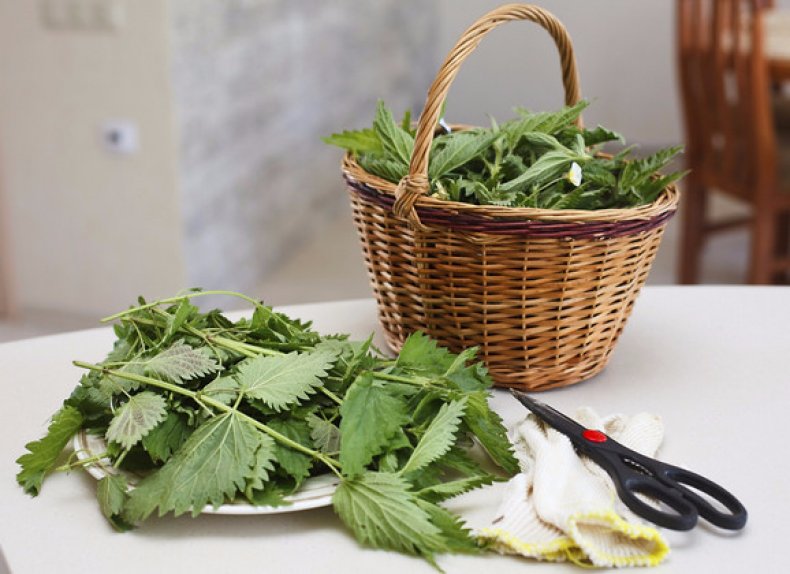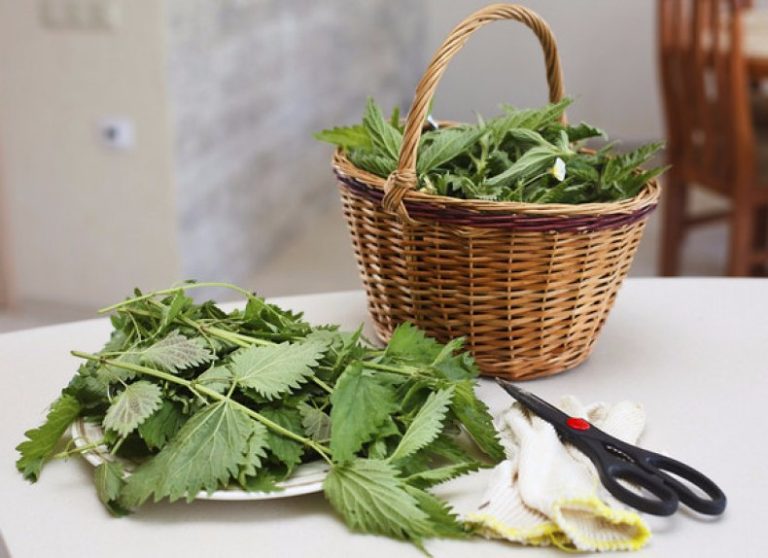Self-made manure plants can be used in many ways. Used correctly, they fertilize the soil, strengthen your vegetables and drive away pests such as aphids.
Plants that are well suited for preparing liquid manure are, for example, nettles, comfrey, field horsetail or tansy. Onions or nasturtiums from your vegetable garden are also suitable.
These plants nourish your garden soil and the heavy-duty plants in your garden, like tomatoes, squashes, and zucchini, with nutrients like nitrogen, calcium, iron, and magnesium.
At a glance – fertilizing with nettle manure

Nutrients included: nitrogen, calcium, iron, magnesium
Ideal for: tomatoes, squash, courgettes, peppers, cauliflower, cucumbers, potatoes, many other types of cabbage
Slurry not suitable for: peas, beans, lamb’s lettuce, all herbs
Quantity: Ratio of liquid manure to water 1:10; Use approx. 2-3 times per season
Prepare nettle manure
Fill a barrel or barrel about two-thirds full with the coarsely chopped nettle plants and pour in rainwater to about a hand’s width below the rim. Cover the jar with wire mesh or cloth to keep birds from falling in, or place a large branch or board in the bin to help birds find their way out. The addition of a handful of rock flour can bind the odor development somewhat. Stir the manure every 2-3 days. If the liquid has turned dark after about two weeks and no longer foams when stirred, your liquid manure is ready.
After just a few days, the fermentation process begins, which, however, is accompanied by a significant odor development. If you have the opportunity, you should set the vessel a little apart.
Field horsetail – use the stubborn weed as manure
Where horsetail grows, it is a very stubborn herb. Field horsetail can only be driven away through long-term and intensive tillage. During this time, however, you can make the herb usable by using it for a plant manure. The high content of silicic acid makes it an effective remedy against aphids and also as a preventative against fungal attack on e.g. roses.
Put the horsetail manure in the same way as the nettle manure and fill a bucket with two thirds of the plant and fill the bucket with rainwater up to just below the edge of the bucket. Leave the brew for 24 hours and boil the liquid with the herb for 20 minutes. When boiling, the silicic acid is released from the field horsetail and is thus contained in the irrigation water. Let the brew cool down and use it to fertilize your plants or spray them to protect against pests.
Spread liquid manure
Dilute the manure with water in a ratio of 1:10. It is best to use the watering can without a watering attachment so that you can apply the liquid manure at the point where the plant comes out of the ground.
Plant manure should not be applied in sunshine, as it can otherwise burn the plants. The best time to apply liquid manure is early in the morning.
Fight pests with nettle manure

Manure or a brew made from stinging nettle or field horsetail is also suitable as a remedy against aphids because of its high proportion of silica if you spray your plants with it as a preventive measure or after the infestation has started in the appropriate places. You should definitely dilute the liquid manure, otherwise it will be too strong and burn your plants.
A brew consists of the same ratio of plants and water as a liquid manure. However, this only takes about 12 hours and is therefore better suited for generously spraying the leaves.
Caution: If it rained shortly after spraying your pest infestation, the effect will have worn off and you should apply the diluted manure again and spray your plants.

